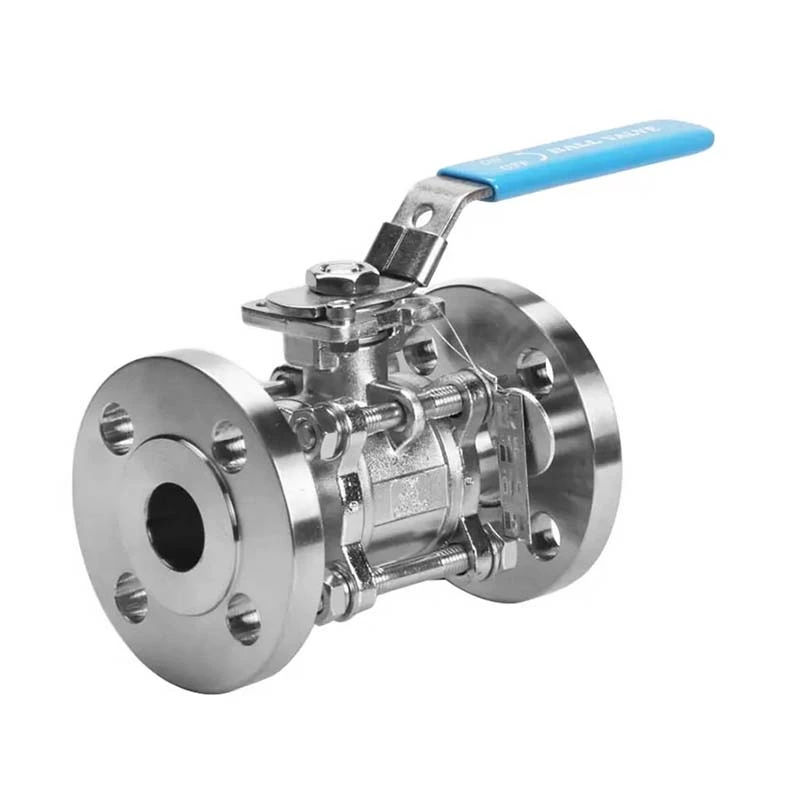Sanitary Ball Valve Seat Dimensions
The size of a Sanitary Ball Valve's sealing seat directly impacts valve sealing performance and service life, and should be determined based on factors such as ball size, medium pressure, and temperature. The inner diameter of the sealing seat should maintain a clearance of 0.05-0.15mm with the ball diameter, and the outer diameter should be 0.2-0.5mm larger than the valve body's sealing groove to achieve an interference fit. The sealing surface taper angle is typically designed to be 15°-30°, with the contact area width controlled to 2-3mm, and the contact pressure distribution uniformity error within 10%. For high-temperature operating conditions, allow for 0.8%-1.2% thermal expansion compensation. For high-pressure environments, three to five trapezoidal sealing ring grooves are required, with a depth of 0.3-0.6mm and a spacing of 2-4mm. The compression of PTFE sealing seats should be controlled at 15%-25%, while that of PEEK should be 8%-12%. Rubber seals require a pre-compression of 30%-40%. The bottom diameter tolerance of the mounting groove should be H8, with end face runout no more than 0.02mm and a surface roughness of Ra ≤ 0.8μm. The seal seat inner chamfer has an R0.5-R1 angle, and the outer chamfer has a 0.3 x 45° angle to prevent assembly scratches. At a test pressure of 1.5 times the operating pressure, the deformation of a 50mm diameter seal seat should be less than 0.05mm. Large-diameter seal seats over 150mm require 6-8 evenly spaced anti-extrusion bosses.
The seal seat thickness is differentiated by pressure level: 4-6mm for PN16, 8-10mm for PN40, and a layered 12-15mm structure for ultra-high-pressure PN100. The sealing surface in contact with the ball must be mirror-finished with a flatness tolerance of ≤0.005mm and a surface hardness 20-30 HB lower than that of the ball. For media containing particles, the seal seat should have a 0.1-0.3mm scraped edge with a 55°-65° angle. Under low-temperature operating conditions, the difference in linear expansion coefficient between the sealing seat and the valve body should be less than 2×10^-6/°C. A dimensional compensation structure utilizes a wave-shaped or U-shaped groove design. Assembly preload is optimized through finite element analysis. The typical preload for a DN50 valve is 800-1200N, with a 60% increase in load for every 50mm increase in diameter. The back-pressure groove in the sealing seat is 1.5-2mm deep and 3-5mm wide, with a controlled back-pressure area ratio of 1:1.2-1.5. The dynamic seal utilizes a double-lip design, with a primary sealing lip thickness of 1.2mm and a secondary sealing lip thickness of 0.8mm, separated by a spacing of 2.5-3mm. To meet bidirectional sealing requirements, support rings of unequal height are designed on both sides of the sealing seat: 4mm high on the high-pressure side and 3mm high on the low-pressure side. During maintenance, the seal seat removal force should not exceed 200N·m. The disassembly grooves are designed to be 6mm wide by 3mm deep, with four symmetrically spaced locations. The compression set of the rubber seal seat, tested at 70°C for 24 hours according to GB/T7759, should be ≤35%, with a dimensional change within ±1.5%.
Dimensional stability treatment includes heat treatment of the PTFE material at 260-300°C for 2 hours, annealing of the POM at 120°C for 4 hours, and a 0.02-0.03mm hard chrome coating on the metal seal seat. The seal seat's radial stiffness is enhanced by reinforcing ribs, 1.5-2mm high, 15-20mm apart, with 8-12 ribs evenly distributed around the circumference. The fireproof design utilizes an Inconel 718 metal sealing ring with a 3mm width and an interference fit of 0.1-0.15mm, combined with a graphite seal. Two O-ring grooves are provided at the seal seat to valve stem clearance, with a width of 2.62mm ± 0.05 and a depth of 1.78mm ± 0.03. Experimental data shows that when the sealing pressure reaches 25-35 MPa, the creep of the PTFE seal seat is controlled within 0.03 mm/1000 h. For sanitary valves, the seal seat has a fillet radius R ≥ 3 mm, the surface is electropolished to Ra ≤ 0.4 μm, and the dimensions meet 3-A Sanitary Standards. In vibrating conditions, the seal seat mounting area is equipped with anti-loosening teeth with a pitch of 0.8 mm and a tooth depth of 0.3 mm, increasing the contact area by 40%. The large-diameter split seal seat design adopts an 8-12-petal block structure, with a 1 mm overlap at the joints. The pre-tightening bolt torque value increases by 15 N·m for every 50 mm increase in diameter.
